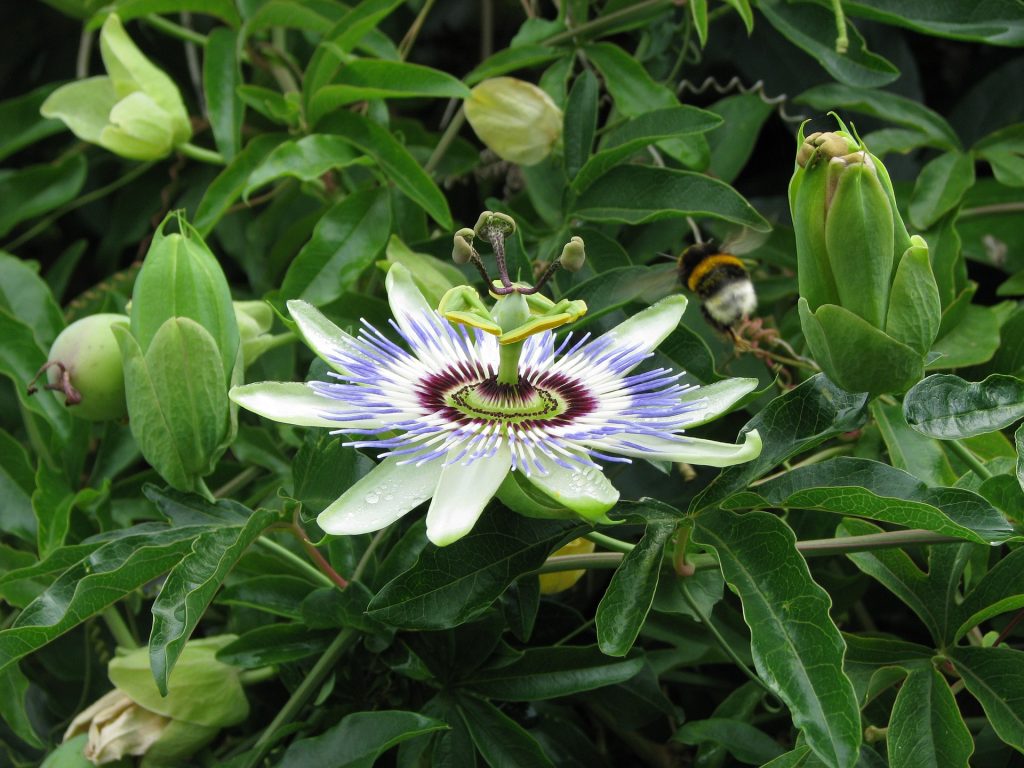 Flavonoids are a subgroup of polyphenols. Flavonoids possess a multiple flavone ring structure which contain hydroxyl (-OH) groups and this gives them antioxidant properties. Flavonoids have a wide variety of physiological effects in animals, and this can include anti-inflammatory, antitoxic, hepatoprotective, enzyme inhibitory and anticarcinogenic effects. However, there is good evidence that certain flavonoids may have anxiolytic effects in a similar way to the benzodiazepine drugs. Benzodiazepines are a group of drugs used to treat anxiety, that work by binding to GABA receptors in the brain. This decreases the excitation of neurones, producing a sedative and calmative effects. Benzodiazepines have been found to occur in nature, and preparations of benzodiazepines have been made from plant material. During this process it was discovered that flavonoids in the plant material can also bind to the benzodiazepine receptor giving the same sedative and calmative effects as the benzodiazepines.
Flavonoids are a subgroup of polyphenols. Flavonoids possess a multiple flavone ring structure which contain hydroxyl (-OH) groups and this gives them antioxidant properties. Flavonoids have a wide variety of physiological effects in animals, and this can include anti-inflammatory, antitoxic, hepatoprotective, enzyme inhibitory and anticarcinogenic effects. However, there is good evidence that certain flavonoids may have anxiolytic effects in a similar way to the benzodiazepine drugs. Benzodiazepines are a group of drugs used to treat anxiety, that work by binding to GABA receptors in the brain. This decreases the excitation of neurones, producing a sedative and calmative effects. Benzodiazepines have been found to occur in nature, and preparations of benzodiazepines have been made from plant material. During this process it was discovered that flavonoids in the plant material can also bind to the benzodiazepine receptor giving the same sedative and calmative effects as the benzodiazepines.
Experiments with animals show that flavonoids produce mild anxiolytic effects and the effects vary slightly for different flavonoids. Chrysin is a flavonoid present in passion flower (Passiflora coerulea). Chrysin belongs to the flavone group of flavonoids. Chrysin was one of the first flavonoids shown to have the ability to bind to the benzodiazepine receptor, and this may explain the traditional use of passion flower as a mild sedative with relaxing properties. Apigenin, another flavonoid that belongs to the flavone group. Apigenin is present in chamomile (Matricaria recutita). Apigenin has also been shown to bind to the benzodiazepine receptor and may also possess sedative and anxiolytic effects. Chamomile has been used traditionally for its calmative and sedative properties, and this may be explained by the presence of apigenin. The flavone group of flavonoids may therefore possess significant hypnotic effects that make them useful in the treatment of generalised anxiety disorder (GAD) or panic attacks.

Flavonoids may have particular anti-anxiety effects in animals and humans. Of the flavonoids investigated, the flavones chrysin and apigenin may be particularly beneficial at treating anxiety. Apigenin is found in the chamomile plant and chrysin is found in passion flower (pictured). Both of these plants have traditionally been used as sedatives, hypnotics and as anxiolytics. These effects may be explained by the flavones they posses.
In another study, researchers investigated the anxiolytic effects of apigenin in mice and found that administration of apigenin demonstrated anxiolytic effects in the mice without sedation. When the initial dose was increased 10-fold, there was also a sedative effect present in the mice. Therefore at lower doses apigenin may cause a mild anxiolytic effect, whereas at high doses, there may also be a sedative effect. However, it might not just be flavones that are are able to exert anxiolytic effects in animals and humans. Other flavonoids may also have this property. For example, quercetin belongs to the flavonol group of flavonoids. Quercetin exerts significant anxiolytic and antidepressive effects in animals. It is unclear how quercetin is able to exert this effect, but quercetin may be able to modify the stress response in the brain through inhibition of the release of stress hormones. That flavonoids may have different mechanisms of action suggest that when a range of flavonoids are taken together they may have synergistic anxiolytic effects.
Eat Well, Stay Healthy, Protect Yourself
RdB
